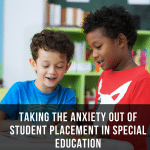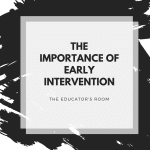School district 204 in Naperville, Illinois has been on the news a lot lately, and not for its awesome test scores and stellar college acceptance rates. Last school year alone, District 204 experienced three student deaths, two of which were ruled to be suicides. According to Michelle Rusk, a suicide expert, she claims that the “community pressure placed on teens to succeed and families to maintain the idealized ‘white picket fence’ life,” mixed with the relatively new “need for daily validation of those unrealistic lifestyles on social media” has led to rampant stress and anxiety in this normally picturesque suburban town. Research is currently being done in this District, in the form of a survey for 7th and 10th graders, to better figure out what is stressing their students out the most. The survey looks at issues like competition, athletic or academic pressures, peer and family relationships, and bullying and social media to try to get a better understanding of the causes of this epidemic.
I do not want to isolate District 204, as I see the rampant signs of stress in my own middle school on a daily basis. Without fail, every time I get a chance to talk with our school’s social worker, a student will interrupt our conversation with teary eyes, telling her they need to talk. Of course, I don’t ask any questions, as I would never want to get in the way of a student’s emotional needs. I always excuse myself and close the door tightly behind me.
But seriously, this happens all.the.time. And she will tell you that the last few years the levels of stress in our middle schoolers have sky-rocketed.
So what has changed in the last few years?
The Unrealistic Expectations On Social Media
In a recent survey performed by The Nemours Foundation, ⅓ of the students reported that school work stresses them out. The pressure to perform well is nothing new for youth, I mean kids in the 90s were stressed out over school work too. The one major difference is that now students’ successes are often displayed on social media so that every accomplishment is made public. Since most people do not post their failures on social media, this can create an unrealistic picture of reality for students. In my district, we have students who are in advanced classes, cheerleading, sports, and also sing or play an instrument. All of these pressures add up, and students reach their breaking points. The pressures to succeed have always been there for kids, but with the addition of social media, students are bombarded with unrealistic expectations in everything they do.
There are so many Standardized Assessments
In my district, we use NWEA testing in the Fall, Winter, and Spring to measure students’ growth in math and reading. How our students perform on these assessments plays a part in placing them in their classes and it determines if they are making adequate growth. So for some students- a lot rides on these tests. Three times a year our students get pretty anxious, and it shows. Back in the day, we took our standardized assessments during a week of school in the Spring and then didn’t get the results until the next fall, when we were already in the next grade level, and no one really cared about seeing how they did last school year, am I right?!?
Socialization Skills? What Socialization Skills?
In the same survey, just as many students reported that they were also stressed out about “fitting in” in school. Historically, this has always stressed kids out. But for this generation, technology has definitely played a role in the socialization of students. According to the Child Mind Institute, teens are learning to do most of their communication while looking at a screen, not another person. As proof of this, last week I mentioned to a couple of my students that maybe they should give so-and-so a call for help on some homework. They looked at me with wide eyes and responded, “Are you kidding? Like, call them and talk to them? I’d rather text them, Mrs. Hoffman. Calling is weird.” So apparently actually discussing things over the phone is considered weird. My bad. But really, I can’t fathom what it is like to try and make friends in this day and age when it feels more natural to meet someone through a screen.
What can we do to help reduce stress?
Clearly, the stress and anxiety students are feeling has become an epidemic, with many middle and high schools across the country sharing experiences like that of District 204. What can we do?
There are some small, relatively easy changes that can be made in the interest of all students. For one, you can talk to students and parents about the importance of limiting screen time, and talk to students about how what they see on social media isn’t always the best representation of reality. In addition to limiting screen time, the Chicago Tribune reports that many high schools in Illinois have opted for a later start time this year, with sleep deprivation (because they can’t put their screens away long enough to go to bed) playing a role in the stress and anxiety levels of students. In addition, some schools have new guidelines for coaches and advisors, limiting practices for sports to one a day (either in the morning or after school). Some schools have even set in place the guideline that there be no homework over holiday weekends and breaks. All of these are great ideas to help reduce the amount of stress students are feeling.
But to be even more proactive, schools should have social-emotional standards put in place, and an idea of how these standards will be met. In the middle school, I work at, we run an alternate schedule about twice a month, calling it “an advisory day.” On these days, every staff member in the school meets with their advisory group (around 12 kids, all in the same grade level), for around 40 minutes, all year long. It is during this time that staff addresses any issues they may be plaguing students. This gives the students an opportunity to form relationships with their peers, and also a staff member, who becomes their advocate.
If scheduling an advisory period in your school is totally out of your hands, just making time for students (before or after school, at lunchtime, etc.) to talk about what is stressing them out and offering advice about activities that can alleviate stress can help too.
References:
Baker, Suzanne. “Suicide Expert Says Rampant Stress Not a New Problem for Naperville Students.” Naperville Sun, 19 Dec. 2017, Suicide Expert
Cullotta, Karen Ann, et al. “Later Start Times, Less Homework: Here’s What Elite Schools Are Doing to Help Students Cope with Stress.” Chicagotribune.com, 15 Nov. 2017, Teen Anxiety
Rachel Ehmke is managing editor at the Child Mind Institute. “How Using Social Media Affects Teenagers.” Child Mind Institute, Social Media/Teenagers
“What Stresses You Out About School?” Edited by Steven Dowshen, KidsHealth, The Nemours Foundation, Kids Health. http://kidshealth.org/en/teens/school-stress.html






